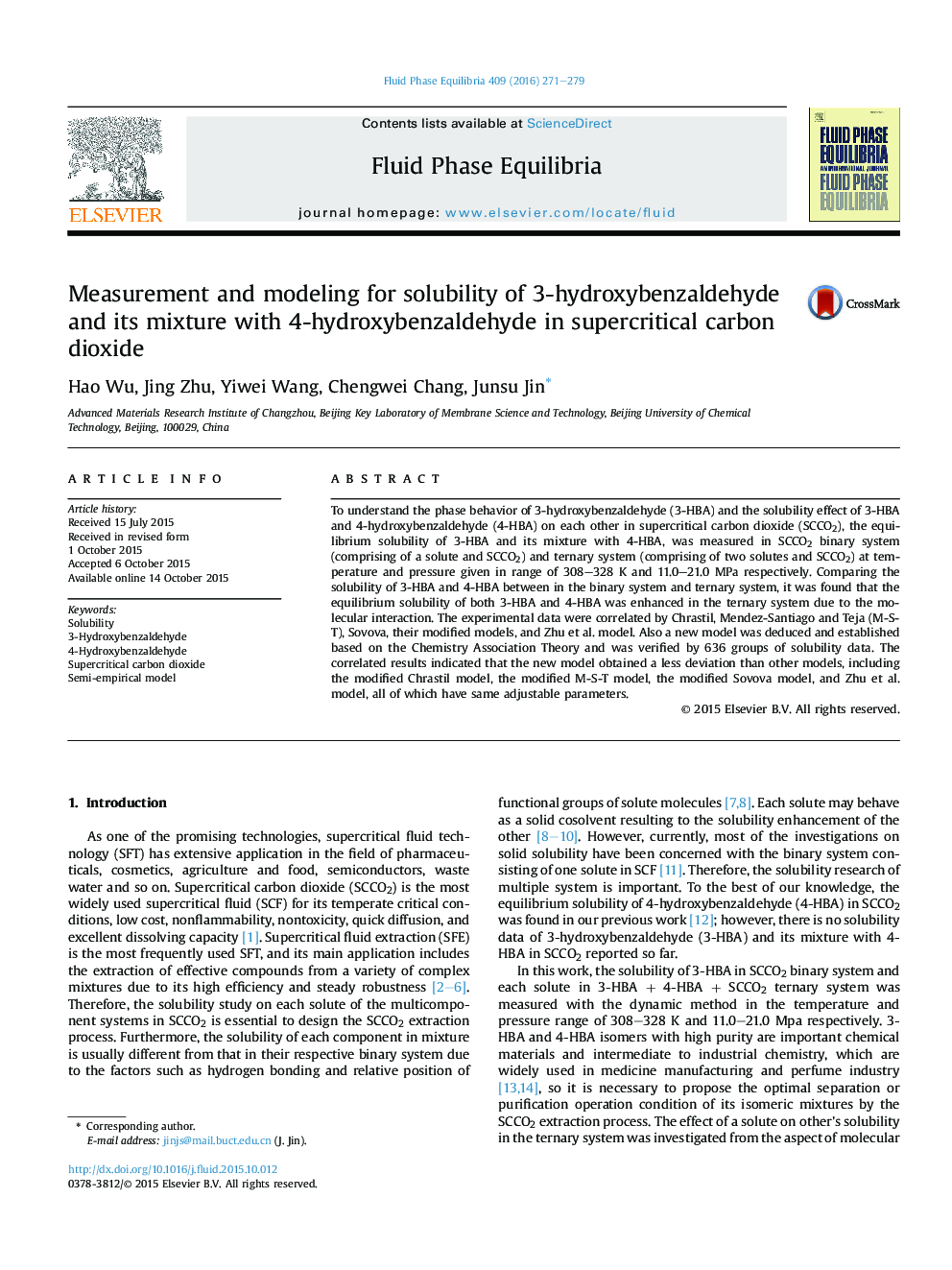| Article ID | Journal | Published Year | Pages | File Type |
|---|---|---|---|---|
| 201356 | Fluid Phase Equilibria | 2016 | 9 Pages |
•Solubility of 3-HBA and its mixture with 4-HBA was measured in SCCO2.•The effect of relative position of functional groups on solubility was analyzed.•The maximum separation factor and separation efficiency of mixture are obtained.•A new model was proposed and tested by 636 group solute mixture solubility data.
To understand the phase behavior of 3-hydroxybenzaldehyde (3-HBA) and the solubility effect of 3-HBA and 4-hydroxybenzaldehyde (4-HBA) on each other in supercritical carbon dioxide (SCCO2), the equilibrium solubility of 3-HBA and its mixture with 4-HBA, was measured in SCCO2 binary system (comprising of a solute and SCCO2) and ternary system (comprising of two solutes and SCCO2) at temperature and pressure given in range of 308–328 K and 11.0–21.0 MPa respectively. Comparing the solubility of 3-HBA and 4-HBA between in the binary system and ternary system, it was found that the equilibrium solubility of both 3-HBA and 4-HBA was enhanced in the ternary system due to the molecular interaction. The experimental data were correlated by Chrastil, Mendez-Santiago and Teja (M-S-T), Sovova, their modified models, and Zhu et al. model. Also a new model was deduced and established based on the Chemistry Association Theory and was verified by 636 groups of solubility data. The correlated results indicated that the new model obtained a less deviation than other models, including the modified Chrastil model, the modified M-S-T model, the modified Sovova model, and Zhu et al. model, all of which have same adjustable parameters.
Graphical abstractFigure optionsDownload full-size imageDownload as PowerPoint slide
